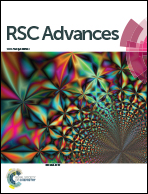Polymer composite random lasers based on diatom frustules as scatterers
Abstract
In this work the possibility to exploit the ability of multiple scattering and localization of light shown by diatom silica shells (frustules) for photoluminescence amplification in a random laser was investigated. To this aim polymethylmethacrylate matrix composite random lasers based on rhodamine B and frustules as gain medium and scatterers, respectively, were prepared by solvent casting. Two different kinds of frustules were used, the first represented by diatomite, a fossil material composed of a mixture of frustules from different diatom species, without specific shape, size and porosity; the second were living diatom frustules from freshwater biofilm, a more homogeneous biosilica, dominated by one frustule type. Chemical properties, morphology and photoluminescence of both biosilica fillers were investigated. Random laser experiments were carried out on polymer composites. The diatomite material was characterised by rectangular and circular pores, ranging from 25 nm to 1 μm in size and showed weak photoluminescence upon excitation at 405 nm. Biofilm frustules were more homogeneous in size and microstructure, with average length of about 20 μm and pore diameters between 20 and 100 nm. The frustule photoluminescence, observed after irradiation at 488, 515, 543 and 635 nm was higher than in diatomite. In addition, the two biosilica materials differed with respect to the presence of superficial silanol groups, that were not detected in diatomite. Random laser experiments showed an incoherent random lasing effect in all polymer composites. The laser threshold diminished at increasing frustule content, with a lowest value recorded using biofilm frustules (308 kW cm−2). This is probably due to the frustule size exhibited in this almost monospecific biosilica, that was in the range of most typical morphology-dependent resonators.


 Please wait while we load your content...
Please wait while we load your content...